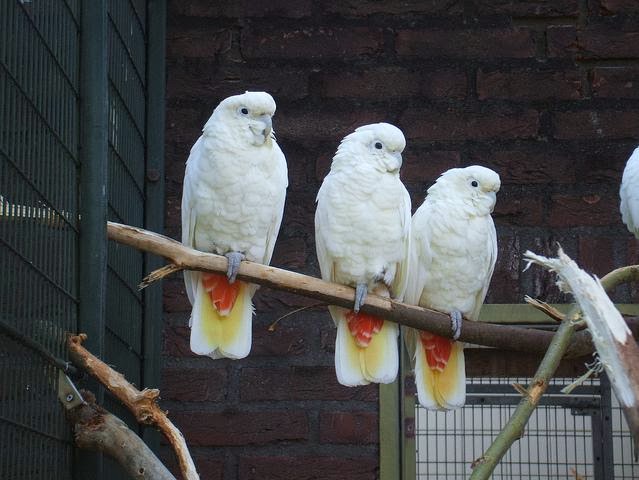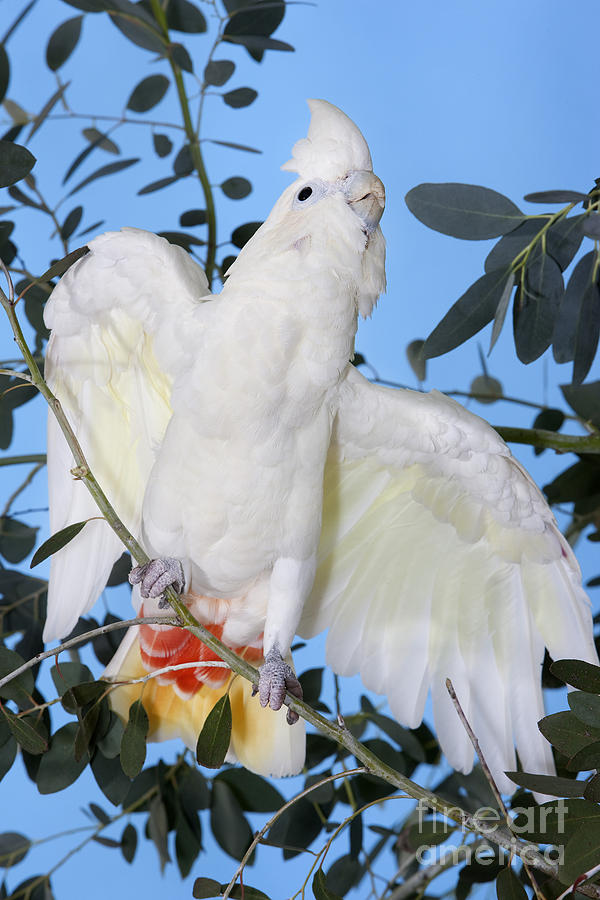
The release of captive birds may introduce disease into the wild population. Very dry breeding seasons may lead to complete breeding failure. Typhoons are a threat, at least in already declining populations. Formerly, it could be found all over the archipelago (Dickinson et al.

It is also persecuted as a crop-pest and hunted for food. The Philippine Cockatoo Cacatua haematuropygia The Philippine Cockatoo or Red-vented Cockatoo Cacatua haematuropygia is restricted to lowland forest areas and mangroves in the Philippines. Lowland deforestation and mangrove destruction have been extensive throughout its range, and have contributed significantly to its decline. During nest monitoring on Pandanan, illegal tree cutting was also documented. Poaching of nestlings and snares possibly intended for roosting cockatoos have also been noted during recent conservation work on Pandanan Island. High numbers were traded (legally) internationally in the 1980s (e.g. On Palawan, Polillo and Samar, trapping is particularly serious, and the high price fetched per bird (c.US$160 in Manila in 1997 and US$300 in 2006) means that chicks are taken from virtually every accessible nest. The Red-Vented Cockatoo is all white with a red undertail, called the vent. It is also known as the Philippine Cockatoo. This species qualifies as Critically Endangered because it has suffered an extremely rapid population reduction owing to extensive loss of its lowland habitats and trapping for the cagebird trade. The Red-Vented Cockatoo ( Cacatua haematuropygia) is a critically endangered medium-sized bird. Today several species from this genus are considered threatened due to a combination of habitat loss and capture for the wild bird trade, with the Blue-eyed Cockatoo, Moluccan Cockatoo and Umbrella Cockatoo considered Vulnerable, the Red-vented Cockatoo considered Endangered, and the Yellow-crested Cockatoo considered Critically Endangered. pastinator) approach and possibly slightly overlap smaller examples of leadbeateri and alba in bill size. Large individuals of the larger species (e.g. The other subdivision has smaller bills, short uncoloured crests and more slender wings (ducorpsi, goffini, haematuropygia, pastinator, roseicapilla, tenuirostris). One group is characterized by the possession of heavy bills, up curving coloured crests and round wings (alba, galerita, leadbeateri, moluccensis, ophthalmica, sulphurea) within this group leadbeateri and alba have substantially smaller bills than the other species but are alike in the shapes of the crests and wings.

Two major subdivisions can be recognized within Cacatua. The Red-vented Cockatoo is a critically endangered species endemic to the Philippines. They have a primarily white plumage (in some species tinged pinkish or yellow), an expressive crest, and a black (subgenus Cacatua) or pale (subgenus Licmetis) bill. The Red-vented Cockatoo is classified as Critically Endangered (CR), facing an extremely high risk of extinction in the wild. Other contributing factors are loss of coastal habitat and persecution as an agricultural pest.Cacatua is a genus of cockatoos found from the Philippines and Wallacea east to the Solomon Islands and south to Australia. US$160 in Manila in 1997) means that chicks are taken from virtually every accessible nest. Populations have decreased dramatically due to illegal trapping for the cage-bird trade. Environmental organizations like the Katala Foundation or Rainforest Rescue are trying to prevent the construction.Ī captive population is bred by Antonio de Dios's Birds International near Manila. The efforts for conservation of the Katala Foundation are threatened by plans to build a coal-fired power station on Palawan's coast. She said about 60-70 of the critically endangered bird, which is also known as the red-vented cockatoo, are dwelling in the IPPF’s lowland forests. There are around 180 found in wilderness conservation in the municipality of Narra and Puerto Princesa, Palawan, particularly in Rasa Island. The species stronghold is the Palawan Faunal Region where the Katala Foundation has been running the Philippine cockatoo Conservation Programme since 1998.

Now remnant populations exist on the islands of Palawan, Tawitawi, Mindanao and Masbate. Precise data on life span of the average red-vented cockatoo is poorly documented. Red-vented cockatoos can live up to 40 years. The underside of the flight feathers are yellow.

The under-tail coverts are red and the beak is almost white. However, by 2008 this was reduced to probably less than 1000. Red-vented cockatoos are small white cockatoos with a short white recumbent crest. In the early 1990s the total wild population was estimated at 1000–4000. Red-vented cockatoos were formerly widely distributed on all larger and many smaller islands of the Philippines, excluding northern and central Luzon.


 0 kommentar(er)
0 kommentar(er)
